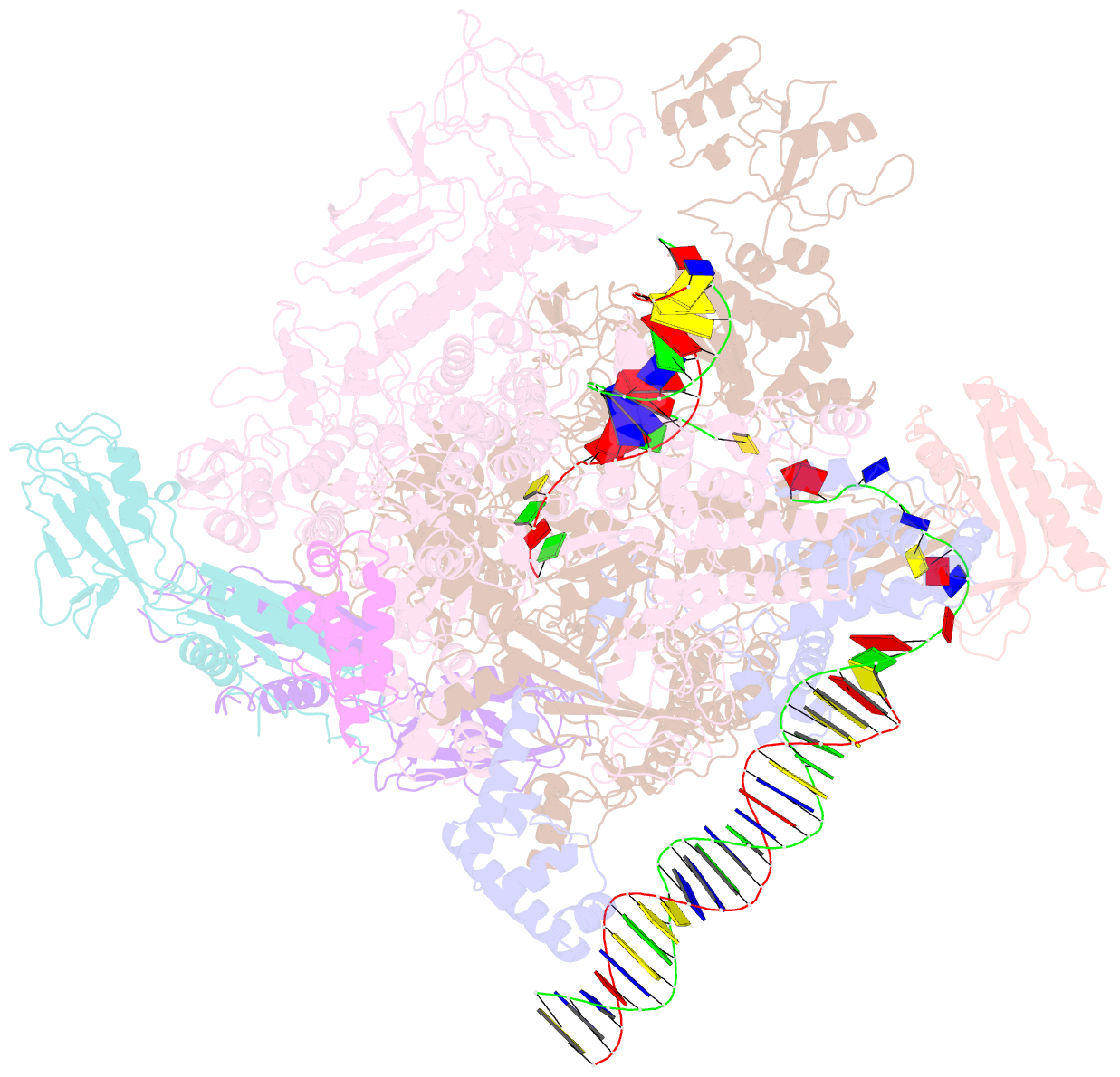Summary information and primary citation
- PDB-id
- 6omf; SNAP-derived features in text and JSON formats;
DNAproDB
- Class
- transcription, transferase-DNA
- Method
- cryo-EM (3.26 Å)
- Summary
- Cryoem structure of sigmas-transcription initiation complex with activator crl
- Reference
- Cartagena AJ, Banta AB, Sathyan N, Ross W, Gourse RL, Campbell EA, Darst SA (2019): "Structural basis for transcription activation by Crl through tethering of sigmaSand RNA polymerase." Proc.Natl.Acad.Sci.USA, 116, 18923-18927. doi: 10.1073/pnas.1910827116.
- Abstract
- In bacteria, a primary σ-factor associates with the core RNA polymerase (RNAP) to control most transcription initiation, while alternative σ-factors are used to coordinate expression of additional regulons in response to environmental conditions. Many alternative σ-factors are negatively regulated by anti-σ-factors. In Escherichia coli, Salmonella enterica, and many other γ-proteobacteria, the transcription factor Crl positively regulates the alternative σS-regulon by promoting the association of σS with RNAP without interacting with promoter DNA. The molecular mechanism for Crl activity is unknown. Here, we determined a single-particle cryo-electron microscopy structure of Crl-σS-RNAP in an open promoter complex with a σS-regulon promoter. In addition to previously predicted interactions between Crl and domain 2 of σS (σS2), the structure, along with p-benzoylphenylalanine cross-linking, reveals that Crl interacts with a structural element of the RNAP β'-subunit that we call the β'-clamp-toe (β'CT). Deletion of the β'CT decreases activation by Crl without affecting basal transcription, highlighting the functional importance of the Crl-β'CT interaction. We conclude that Crl activates σS-dependent transcription in part through stabilizing σS-RNAP by tethering σS2 and the β'CT. We propose that Crl, and other transcription activators that may use similar mechanisms, be designated σ-activators.





